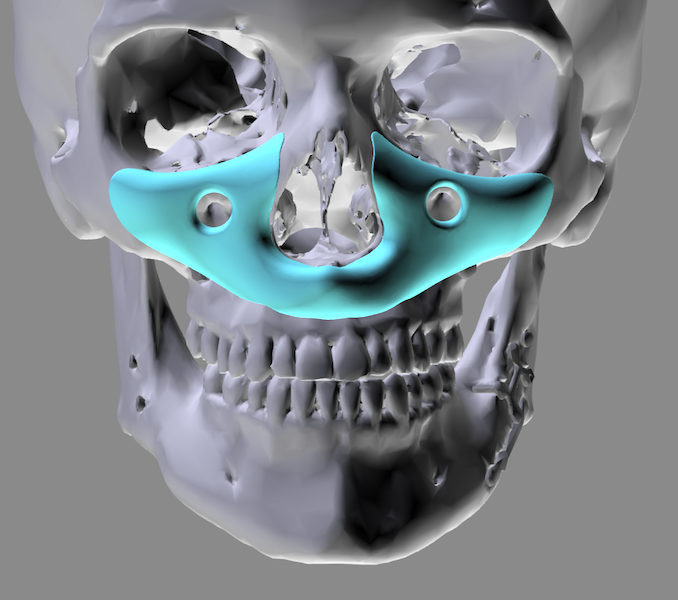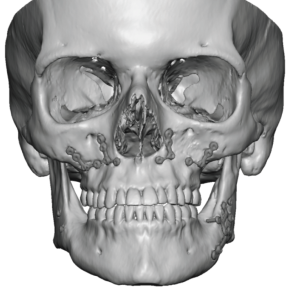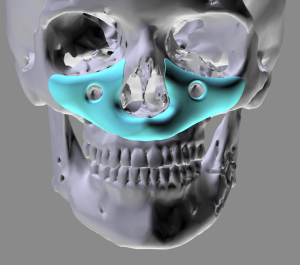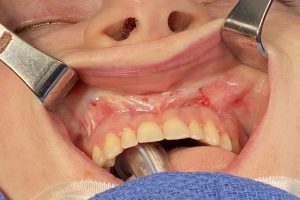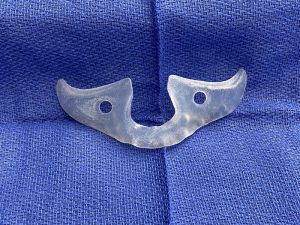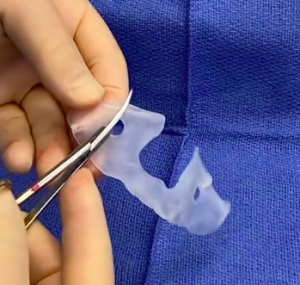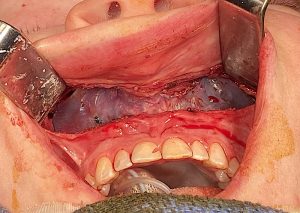Background: Ample projection of the midface is determined by numerous bony and soft tissue landmarks. The most classic sign of a midface deficiency is an underbite. The more posterior positioning of the maxillary arch compared to the mandibular teeth can occur in isolation but often is also part of a more global midface deficiency.
In complete middle deficiency the projection of the entire midface between the forehead-brow bones and the lower jaw/chin is horizontally deficiency resulting in a flat or even concave facial profile. A Lefort I osteotomy advancement provides functional improvement but realigning the upper teeth to the lower teeth and provides increased projection to the nasal base. But the rest of the midface remains behind or unaffected above the lower maxillary osteotomy bone cut. While a LeFort III osteotomy advancement would provide a more effective and complete aesthetic effect there are some practical considerations to doing spin an adult for a primarily aesthetic effect.
The alternative approach to a LeFort III osteotomy advancement in an adult is a first stage LeFort I osteotomy with a second stage custom midface implant to complete it. The custom implant can just include what lies above the previous LeFort I or can also provide more augmentation over that area than what was achieved by the bone movement.
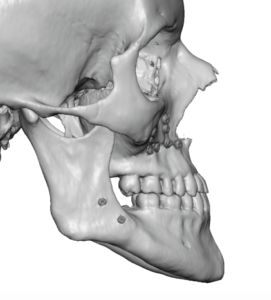
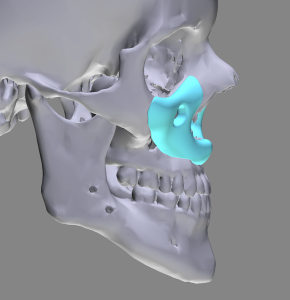
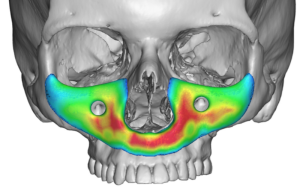
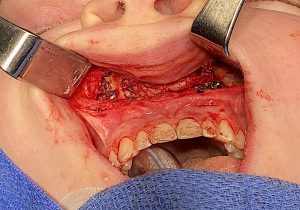
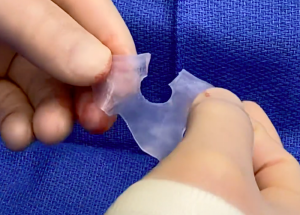
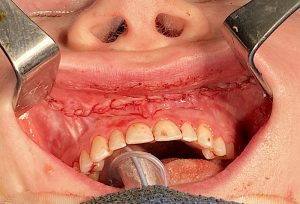
Total midface augmentation in an adult is hard to accomplish with a complete bony approach (LeFort III osteotomy advancement) for a variety of reasons and often is associated with numerous bony step offs and irregularities. A first stage Lefort I advancement followed by a second stage custom midface implant accomplishes the same effect with less morbidity and recovery in an adult.
Case Highlights:
1) In complete midface augmentation a LeFort I osteotomy only treats the lower dentolveolar bony segment deficiency.
2) A custom midface implant completes the facial augmentation effect not treated by a Left I advancement.
3) The custom midface implant covers the entire infraorbital-maxillary surface area leaving incorporating a relief for the infraorbital nerves.
Dr. Barry Eppley
Indianapolis, Indiana

